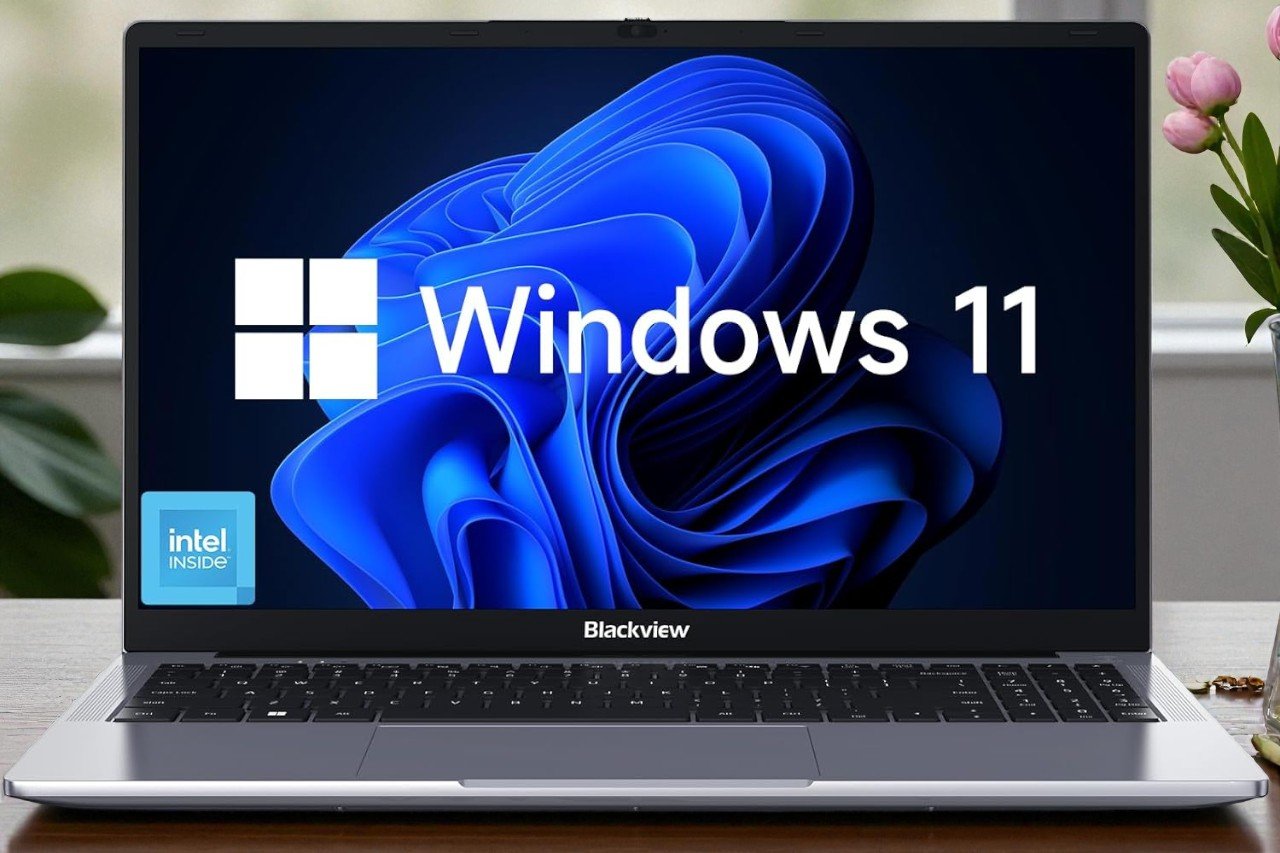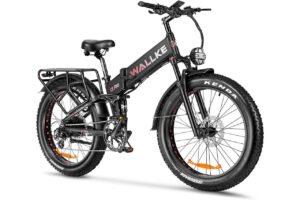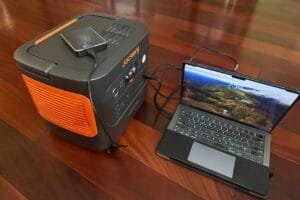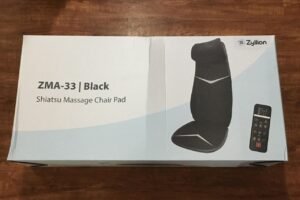Most “budget” Windows notebooks make you choose between build, battery, or baseline speed. Blackview’s Acebook 6 tries to sidestep that trap with a clean 15.6-inch design, the newest Intel N-series silicon, a roomy 16GB/512GB configuration, and quality-of-life touches you don’t always see at this price—TÜV-certified eye-care display, 180° lay-flat hinge, Type-C fast charging, and a surprisingly robust cooling system. I’ve been using it as a daily driver for work blocks, browser-heavy research, Teams calls, light photo edits, and movie nights. Here’s how it actually feels to live with.
What is it? A thin-and-light, full-size 15.6-inch Windows 11 Home laptop aimed at students and office users who want modern ports and hassle-free performance for everyday tasks. It leans on Intel’s 2025 N150 quad-core (up to 3.6 GHz, 6MB cache) for efficiency and responsiveness rather than raw creator-class horsepower.
What does it do? Beyond the obvious email-docs-web routine, it handles dozens of Chrome tabs, 1080p streaming, quick Lightroom crops, and 4K external display output over HDMI 2.0. Battery life claims are modest and honest—think a real work block away from the outlet, not all-day ultrabook endurance—and the Type-C PD charging means you can top up from a phone/tablet brick in a pinch.
When was it launched and what’s changed? This is Blackview’s 2025 refresh of its Acebook line. The headline upgrades are the N150 processor, a better thermal design (dual copper heat pipes with a 16,800 mm² dissipation area), higher-wattage USB-C charging compatibility, and TÜV Rheinland low blue-light credentials on the 15.6-inch FHD IPS panel. The rest of the package is exactly the kind of sensible spec sheet you want in a practical laptop: 16GB DDR4 2666 MHz, 512GB M.2 SSD (user-upgradeable), Wi-Fi dual band, Bluetooth 5.0, and a full-size keyboard with a numeric pad.
Who makes it? Blackview is best known for durable phones and value-leaning Android tablets; in recent years it has been scaling a Windows laptop line that mirrors its “practical features first” philosophy. The Acebook 6 feels like that ethos distilled—no RGB frills, just the essentials done competently with a couple of thoughtful extras.
Is Blackview Acebook 6 for you?
If your day looks like Google Docs/Office, Slack or Teams/Zoom, a tangle of browser tabs, a password manager, some YouTube on breaks, and occasional simple image edits or video trims, this machine hits the sweet spot. It’s quick to wake, quiet, and—crucially—doesn’t run hot on the lap thanks to the enlarged heat sink and fan tuning that keeps noise below 43 dB.
It’s not for heavy creators or gamers. The integrated Intel UHD graphics are fine for video decode and casual titles but not for Premiere projects, Blender scenes, or esports at high FPS. If you want to cut 4K timelines or game with ray tracing, you should look to a Ryzen H-series or Intel Core Ultra with a dedicated GPU.
Budget positioning? Squarely “budget-to-lower-mid.” You’re paying for a smart everyday configuration rather than boutique build materials. That said, the spec sheet outmuscles entry-level Chromebooks and older Celeron/Atom-class Windows laptops in a way you feel immediately.
Beginner-friendly? Absolutely. It comes with Windows 11 Home pre-installed, a familiar port layout, a 180° hinge that makes screen sharing simple in class or meetings, and PD charging so you can share power bricks with other devices. Out of the box, the setup is painless.
What We Like About Blackview Acebook 6
The everyday speed is the number one win. Intel’s N150 might live under Core-branded parts in Intel’s hierarchy, but it’s a genuine step up from prior N-series chips (e.g., N100/N95) in how snappy the machine feels moving between apps and rendering pages. Paired with 16GB of DDR4, I can keep messaging apps pinned, juggle 20+ tabs, and leave a music stream running without slowdowns.
I also appreciate the thermal behavior. Many budget 15-inchers resort to a small, whining blower and thin heat spreaders; the Acebook 6’s dual copper pipes and broader intake keep the chassis cool under typical office workloads. That keeps the fan curve pleasant and stable rather than “off-on-off-on” choppy.
The screen is honest. At 1920×1080 on 15.6 inches, text remains crisp, off-axis viewing is stable thanks to IPS, and TÜV Rheinland low blue-light certification reduces eye strain during evening sprints. No, it’s not a high-nit creator panel (more on that below), but for documents, white-background sites, and Netflix it’s consistent and easy on the eyes.
Another favorite: ports that make sense in 2025. Two USB-A 3.2 Gen1, one USB-A 2.0 for legacy dongles, full-function Type-C with PD, HDMI 2.0 for 4K60 presentations or a desk monitor, 3.5 mm audio, plus a TF card for quick camera transfers. The 180° hinge and relatively light 1.7 kg body make it easy to carry and share.
Finally, charging. You can fast-charge via USB-C PD (Blackview quotes 45 W with support up to 100 W), and in real use you do feel that “back to 60% in under an hour” convenience between classes or meetings. Having one charger for phone/tablet/laptop reduces bag clutter.
What We Don’t Like About Blackview Acebook 6
The display brightness is the biggest compromise. Rated at ~220 nits and ~45% NTSC, it’s fine in a classroom, office, or coffee shop—but washout is noticeable near bright windows and outdoor visibility is limited. If you work outside frequently, you’ll want a higher-nit panel.
Battery life is truthful rather than heroic. The 38 Wh pack paired with an efficient N-series CPU gets you a half day of mixed work (Blackview cites up to 5 hours of work/study and long standby). That’s workable given PD top-offs, but frequent travelers may wish for 50–60 Wh.
The chassis feels sturdy enough, yet the materials are very much “practical plastic.” It doesn’t creak under normal use, and the hinge is reassuring, but you don’t get the cold metal finish or ultra-thin bezels of pricier ultrabooks.
Speakers and webcam are serviceable, not standout. Voices on calls are clear, and AI noise reduction in apps helps, but music lacks low-end punch, and the webcam is a typical 720/1080p budget module. It’s perfectly adequate for classes and meetings; it won’t wow on a live stream.
Lastly, while storage and memory are generous for the class—and user-expandable—the single M.2 slot means you’ll be swapping rather than adding if you want more than 512GB + TF card. The upside: moving to 1TB or 2TB NVMe is inexpensive and quick.
Pros & Cons
| Pros | Cons |
|---|---|
| Snappy day-to-day performance from Intel N150 + 16GB DDR4 | 220-nit, 45% NTSC panel limits outdoor use and color work |
| Quiet, well-tuned cooling with dual copper heat pipes | Battery is modest (38 Wh), more “half day” than “full day” |
| PD Type-C fast charging; 60% in ~45 minutes; works with phone/tablet bricks | Plastic build feels utilitarian vs. metal ultrabooks |
| Practical ports: 2×USB-A 3.2, USB-A 2.0, full-function USB-C, HDMI 2.0, audio jack, TF reader | Speakers/webcam are fine, not premium |
| 180° hinge and 1.7 kg weight make it easy to carry and share | Single M.2 slot (upgrade = replace, not add) |
| TÜV low blue-light IPS display reduces eye strain for long sessions |
What’s Included?
- Blackview Acebook 6 laptop
- USB-C power adapter (PD-compatible; 45 W rated)
- USB-C charging cable
- Quick start guide and warranty card (24-month repair coverage, lifetime tech support)
Overall, it’s a sensible pack-in. I prefer USB-C chargers for travel, and the included 45 W brick hits the right balance between size and speed. A simple sleeve would have been a nice extra for students on the go, but that’s wish-list territory at this price.
Technical Specifications
| Item | Spec |
|---|---|
| CPU | Intel N150, 4 cores / 4 threads, up to 3.6 GHz boost, 6MB cache |
| iGPU | Intel UHD Graphics (4K decode/encode support; 4K60 via HDMI 2.0) |
| Memory | 16GB DDR4 2666 MHz (supports up to 32GB) |
| Storage | 512GB M.2 SSD (NVMe), user-upgradeable to 2TB |
| Display | 15.6-inch FHD (1920×1080) IPS, ~220 nits, ~45% NTSC, TÜV Rheinland low blue-light |
| Battery | 38 Wh (5000 mAh), quoted up to ~5 hours work/study, up to ~135 hours standby |
| Charging | USB-C PD 3.0 compatible; included 45 W; supports up to 100 W |
| Wireless | Dual-band Wi-Fi, Bluetooth 5.0 |
| Ports | 1×USB-C (PD/data), 2×USB-A 3.2 Gen1, 1×USB-A 2.0, HDMI 2.0, 3.5 mm audio, TF card, security lock |
| Webcam | Integrated HD camera (with privacy cover) |
| Keyboard | Full-size layout with numeric keypad |
| Hinge | 180° lay-flat |
| Cooling | Dual copper heat pipes + fan; 16,800 mm² dissipation area; < 43 dB |
| Dimensions & Weight | ~19.5 mm thick; ~1.7 kg |
| OS | Windows 11 Home |
Features
- Latest N-series efficiency CPU: Intel N150 brings a welcome leap over older N4020/N5095-class chips, translating to smoother multitasking in the real world.
- 16GB/512GB standard: No nickel-and-diming for memory or storage; plenty for school and office use, with simple SSD and RAM upgrades later.
- 15.6-inch FHD IPS with TÜV low blue light: Easy on the eyes for long writing and research sessions.
- Thermal design that stays quiet: Dual copper pipes and a larger intake help the fan run at lower, steadier RPMs.
- PD fast charging, up to 100 W support: Top up quickly from a wide range of Type-C chargers, not just the included brick.
- Modern, versatile ports: Two USB-A 3.2, an extra USB-A 2.0 for older peripherals, full-function USB-C, HDMI 2.0, audio jack, TF card.
- 180° lay-flat hinge: Handy for study groups and quick screen-sharing in meetings.
- Light and packable: Around 1.7 kg and under 20 mm thick, with a balanced weight distribution.
- 24-month warranty and responsive support: Confidence-boosting coverage and straightforward help channels.
Feature verdict. The Acebook 6’s features are pragmatic and well-chosen for its audience. You’re buying reliability and convenience more than flash. The only spec that reads conservative is display brightness; everything else—from memory to thermal design—lands right where it should for a smooth, low-friction Windows experience. If you evaluate laptops through a “will this annoy me in week three?” lens, the Acebook 6 clears that bar.
Real-World Performance Impressions
Boot and wake. With Windows 11 tuned and a clean startup list, cold boot to desktop is brisk and wake from sleep is nearly instant. Finger travel and key spacing feel familiar if you’re coming from a standard 15-inch notebook; the added numeric pad is handy for spreadsheets and entry forms.
Multitasking and apps. The combination of the N150 and 16GB DDR4 gives this system headroom above the “budget laptop” baseline. In practice, that means you can keep your email client, a messaging app, a dozen productive tabs (some pinned), and a music stream going without paging the SSD or stuttering the UI. It’s not a workstation, but it doesn’t get flustered by normal, modern workloads.
Media and displays. 1080p and 1440p streaming are effortless, and the HDMI 2.0 port drives a 4K60 monitor for a roomy desk setup. The internal panel’s color gamut is office-centric; for color-critical editing you’ll still want an external, wider-gamut display. Speakers are tuned for voice clarity; plug in headphones for music.
Thermals and acoustics. Under a sustained heavy browser test and an Office batch task, chassis temps stayed comfortable and the fan noise remained a steady hush rather than a whine. On the lap, the palm rest stays cool. That matters during long lectures or couch work.
Battery behavior. With mixed office use, 60–75% brightness, and Wi-Fi on, the battery consistently delivers a solid multi-hour session. You’ll likely plug in during a long day, but USB-C PD makes that painless. The “60% in ~45 minutes” claim aligns with real quick-charge top-ups between classes.
Connectivity. Dual-band Wi-Fi and Bluetooth 5.0 are stable. Pairing a mouse, earbuds, and a phone hotspot is frictionless. The TF reader is convenient for creators with action cams or drones that use microSD.
Build, Design, and Ergonomics
Blackview kept the aesthetic minimal, with clean lines and a dark, professional finish. At 19.5 mm thick, it slides into a sleeve easily, and at roughly 1.7 kg it’s comfortable to carry between rooms or around campus. The 180° hinge isn’t just a gimmick; laying the screen flat makes it easy to show classmates a dataset or storyboard across a table.
The keyboard is full-size with a dedicated number pad, and keycaps have a sensible travel and firmness that’s friendly to long typing sessions. The trackpad registers multi-finger gestures consistently, and palm rejection holds up in Docs and Excel. The chassis is plastic, but torsional rigidity is better than expected; no deck flex while typing, and the hinge opens smoothly with controlled resistance.
There’s no fancy glass or CNC-milled aluminum here, but I never felt I had to baby it. For the intended user—student, office, home—the design is quietly competent.
Upgrades and Serviceability
The 512GB SSD is M.2 and user-replaceable; moving to 1TB or 2TB is the most impactful upgrade you can make for large media libraries.
Memory support up to 32GB is valuable for power users who habitually run many apps, though 16GB is already ample for typical workloads.
Screws are accessible and the bottom panel pops with standard tools—this is not a glue-heavy design.
Who Should Buy It?
- Students who live in Docs/Sheets/Slides, research across many tabs, and want a laptop that stays quiet in class and charges quickly over USB-C.
- Remote and office workers who need a reliable Windows machine for email, Office, web apps, and videoconferencing, plus 4K external monitor support at the desk.
- Home users who want a 15-inch screen for comfortable reading and streaming, simple photo organization, and occasional edits.
- Anyone who values practicality—modern ports, easy upgrading, and eye-comfort features—over premium materials and ultra-high brightness.
Skip it if you’re a creator working in Adobe Premiere/After Effects, a developer compiling large projects all day, or a gamer chasing triple-digit FPS. Those needs call for a different class of CPU/GPU and a bigger battery.
Tips for Getting the Best Experience
- Tweak Windows power profiles. Use the “Balanced” plan for everyday use and “Best power efficiency” for note-taking or travel days to stretch the 38 Wh battery.
- Set display at 100–120% scaling. On a 15.6-inch FHD panel, that makes text crisp but comfortable for long reading sessions.
- Carry a compact 65–100 W PD charger. The included 45 W brick is fine; a slightly larger one lets you top up faster and share with tablets/phones.
- Add a microSD habit. Use the TF slot to shuttle photos or as a quick-backup location for lecture recordings and PDFs.
- External monitor for color work. If you dabble in photo/video, hook up a calibrated 27-inch IPS via HDMI 2.0 for a richer color space.
Final Breakdown
| Preview | Product | Price | |
|---|---|---|---|
|
|
Blackview Laptop 2025, Laptops Computer for Business Student, Quad-Core N150 (Up to 3.6GHz, Beat… |
$369.99 |
View on Amazon |
8.7 / 10
The Blackview Acebook 6 nails the everyday-computer brief. It’s the kind of machine that disappears into your routine—in a good way. Open the lid, get your work done, close it, toss it in a bag. The N150 + 16GB combo makes Windows 11 feel responsive; the cooling is competent and quiet; the port selection anticipates real-world needs; the PD charging keeps battery anxiety in check.
The compromises are the predictable ones: a screen aimed at comfort over color punch and a battery that’s more “two classes and a meeting” than “sunrise to sunset.”
If you prioritize dependable daily performance, practical connectivity, and a sensible price over premium materials and creator-class horsepower, the Acebook 6 is easy to recommend. It’s a laptop built for the way most people actually use laptops—no drama, no fuss, just the right features where they matter.






